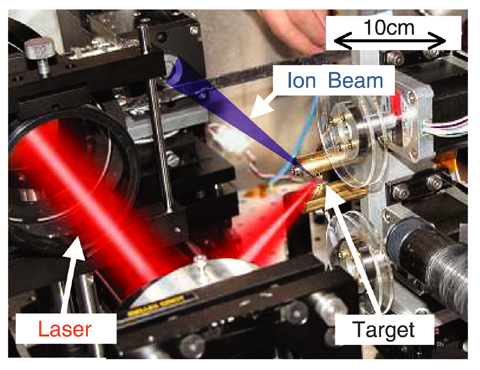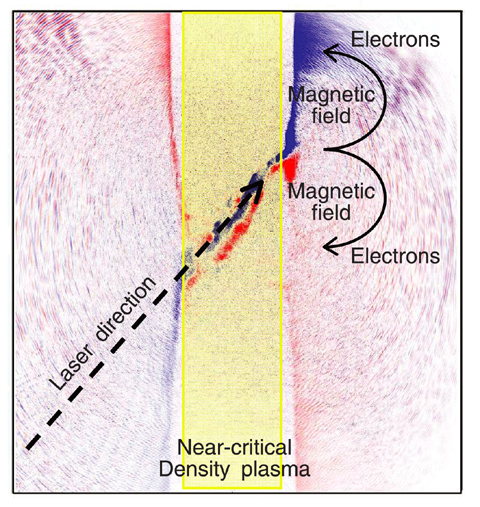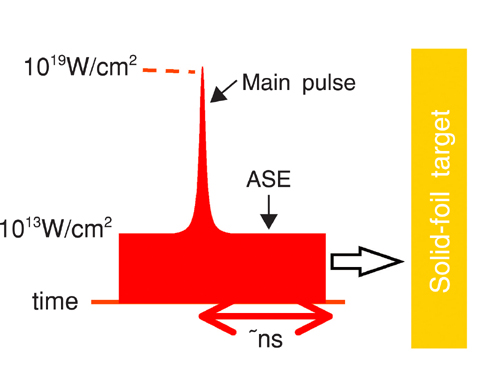
Fig.11-3 Laser ion accelerator

Fig.11-4 A novel mechanism of ion acceleration

Fig.11-5 Near-critical density plasma production method

Fig.11-6 A proton energy spectrum
When a laser pulse is focused onto a thin-foil target with intensity exceeding 1018 W/cm2, high-intensity plasma is induced at the laser focal spot, generating several kinds of radiation including high-energy ions. By using this phenomenon of laser-ion acceleration, conventional ion accelerators, that have lengths of tens of meters, can be replaced by a compact apparatus as shown in Fig.11-3. The Photo-Medical Research Centre (PMRC) aims to develop a compact and novel laser-driven ion accelerator for cancer therapy.
Recently, we proposed and demonstrated experimentally a new method of laser-ion acceleration by which laser pulse energy can be converted more efficiently into ion kinetic energy. The method is based on creation of a near-critical density plasma target. In the case of a usual solid target, the target surface can reflect a large part of the laser pulse energy. By contrast, a laser pulse can penetrate into a near-critical density plasma target (Fig.11-4), where laser energy is efficiently converted into electron kinetic energy. The vortex of moving electrons thus created generates a magnetic field on the target rear surface and sustains an electrostatic ion-accelerating field. A solid foil target is converted into near-critical density plasma by the part of the light pulse that precedes the main high intensity laser, amplified spontaneous emission (ASE) (Fig.11-5).
In experiments we have generated protons with maximum energy of 3.8 MeV. Fig.11-6 shows the proton energy spectrum, which also shows that approximately 1010 protons are generated by a single laser shot. Higher-energy protons will be achieved by optimizing the target density through control of the ASE intensity and duration.
This work is supported by Special Coordination Funds for Promoting Science (SCF) provided by the Ministry of Education, Culture, Sports, Science and Technology of Japan.
<Previous: 11 Photo-Medical Research Cooperation | Next: 11-2 >